Fiat Panda vs Hyundai Kona – Differences & prices compared
Compare performance, boot capacity, efficiency and price at a glance.
Find out which car is the better choice for you – Fiat Panda or Hyundai Kona?
Costs and Efficiency:
Price and efficiency are often the first things buyers look at. Here it becomes clear which model has the long-term edge – whether at the pump, the plug, or in purchase price.
Fiat Panda has a clearly advantage in terms of price – it starts at 14100 £, while the Hyundai Kona costs 23100 £. That’s a price difference of around 8923 £.
Fuel consumption also shows a difference: Hyundai Kona manages with 4.60 L and is therefore hardly perceptible more efficient than the Fiat Panda with 5 L. The difference is about 0.40 L per 100 km.
Engine and Performance:
Under the bonnet, it becomes clear which model is tuned for sportiness and which one takes the lead when you hit the accelerator.
When it comes to engine power, the Hyundai Kona has a significantly edge – offering 218 HP compared to 70 HP. That’s roughly 148 HP more horsepower.
In acceleration from 0 to 100 km/h, the Hyundai Kona is clearly quicker – completing the sprint in 7.80 s, while the Fiat Panda takes 13.90 s. That’s about 6.10 s faster.
In terms of top speed, the Hyundai Kona performs noticeable better – reaching 210 km/h, while the Fiat Panda tops out at 164 km/h. The difference is around 46 km/h.
There’s also a difference in torque: Hyundai Kona pulls clearly stronger with 265 Nm compared to 92 Nm. That’s about 173 Nm difference.
Space and Everyday Use:
Beyond pure performance, interior space and usability matter most in daily life. This is where you see which car is more practical and versatile.
Seats: Hyundai Kona offers somewhat more seating capacity – 5 vs 4.
In curb weight, Fiat Panda is evident lighter – 1055 kg compared to 1370 kg. The difference is around 315 kg.
In terms of boot space, the Hyundai Kona offers significantly more room – 466 L compared to 225 L. That’s a difference of about 241 L.
In maximum load capacity, the Hyundai Kona performs noticeable better – up to 1300 L, which is about 430 L more than the Fiat Panda.
When it comes to payload, Hyundai Kona evident takes the win – 490 kg compared to 365 kg. That’s a difference of about 125 kg.
Who wins the race?
The Hyundai Kona proves to be leaves the rival little chance and therefore becomes our DriveDuel Champion!
Hyundai Kona is the better all-rounder in this comparison.
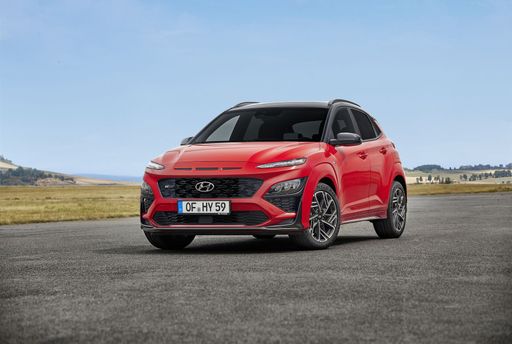
Hyundai Kona
Fiat Panda
The Fiat Panda is a compact city car that brilliantly combines practical design and efficient functionality. Its boxy shape provides ample interior space and visibility, making it a favourite among urban drivers. With its reputation for reliability and affordability, the Panda continues to be a top choice for those seeking a no-frills, dependable vehicle.
details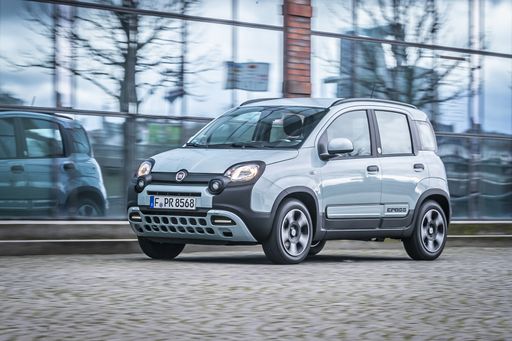 @ media.stellantis.com
@ media.stellantis.com
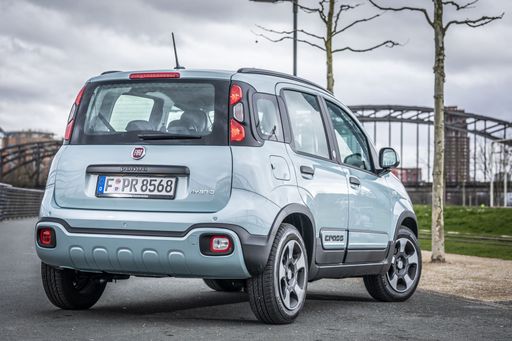 @ media.stellantis.com
@ media.stellantis.com
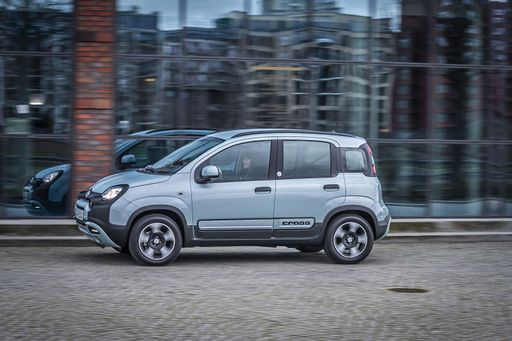 @ media.stellantis.com
@ media.stellantis.com
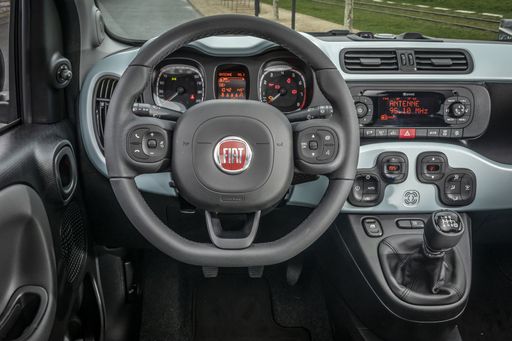 @ media.stellantis.com
@ media.stellantis.com
Hyundai Kona
The Hyundai Kona blends a bold design with a versatile interior, making it a standout choice in the compact SUV market. Its crisp handling and responsive steering provide an engaging driving experience, whether in the city or on the open road. The vehicle also offers a range of features designed to enhance comfort and connectivity, ensuring a pleasurable journey for both driver and passengers.
details @ hyundai.news
@ hyundai.news
 @ hyundai.news
@ hyundai.news
 @ hyundai.news
@ hyundai.news
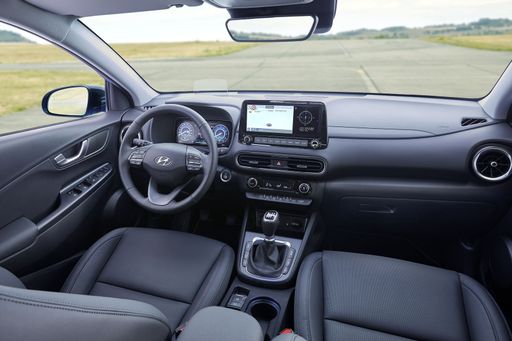 @ hyundai.news
@ hyundai.news

|

|
|
|
|
Costs and Consumption |
|
|---|---|
|
Price
14100 £
|
Price
23100 - 41600 £
|
|
Consumption L/100km
5 L
|
Consumption L/100km
4.6 - 7 L
|
|
Consumption kWh/100km
-
|
Consumption kWh/100km
14.6 - 16.8 kWh
|
|
Electric Range
-
|
Electric Range
377 - 514 km
|
|
Battery Capacity
-
|
Battery Capacity
1.3 - 65.4 kWh
|
|
co2
113 g/km
|
co2
0 - 163 g/km
|
|
Fuel tank capacity
38 L
|
Fuel tank capacity
38 - 47 L
|
Dimensions and Body |
|
|---|---|
|
Body Type
Hatchback
|
Body Type
SUV
|
|
Seats
4
|
Seats
5
|
|
Doors
5
|
Doors
5
|
|
Curb weight
1055 kg
|
Curb weight
1370 - 1773 kg
|
|
Trunk capacity
225 L
|
Trunk capacity
466 L
|
|
Length
3635 mm
|
Length
4350 - 4385 mm
|
|
Width
1643 mm
|
Width
1825 mm
|
|
Height
1551 mm
|
Height
1580 - 1585 mm
|
|
Max trunk capacity
870 L
|
Max trunk capacity
1300 L
|
|
Payload
365 kg
|
Payload
420 - 490 kg
|
Engine and Performance |
|
|---|---|
|
Engine Type
Petrol MHEV
|
Engine Type
Electric, Petrol, Full Hybrid
|
|
Transmission
Manuel
|
Transmission
Automatic, Manuel
|
|
Transmission Detail
Manual Gearbox
|
Transmission Detail
Manual Gearbox, Dual-Clutch Automatic
|
|
Drive Type
Front-Wheel Drive
|
Drive Type
Front-Wheel Drive, All-Wheel Drive
|
|
Power HP
70 HP
|
Power HP
115 - 218 HP
|
|
Acceleration 0-100km/h
13.90 s
|
Acceleration 0-100km/h
7.8 - 11.9 s
|
|
Max Speed
164 km/h
|
Max Speed
162 - 210 km/h
|
|
Torque
92 Nm
|
Torque
200 - 265 Nm
|
|
Number of Cylinders
3
|
Number of Cylinders
3 - 4
|
|
Power kW
51 kW
|
Power kW
85 - 160 kW
|
|
Engine capacity
999 cm3
|
Engine capacity
998 - 1598 cm3
|
General |
|
|---|---|
|
Model Year
2024
|
Model Year
2024 - 2025
|
|
CO2 Efficiency Class
C
|
CO2 Efficiency Class
A, D, C, E, F
|
|
Brand
Fiat
|
Brand
Hyundai
|
Is the Fiat Panda offered with different drivetrains?
Available configurations include Front-Wheel Drive.
The prices and data displayed are estimates based on German list prices and may vary by country. This information is not legally binding.
